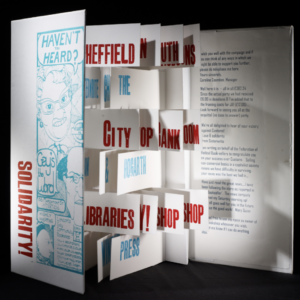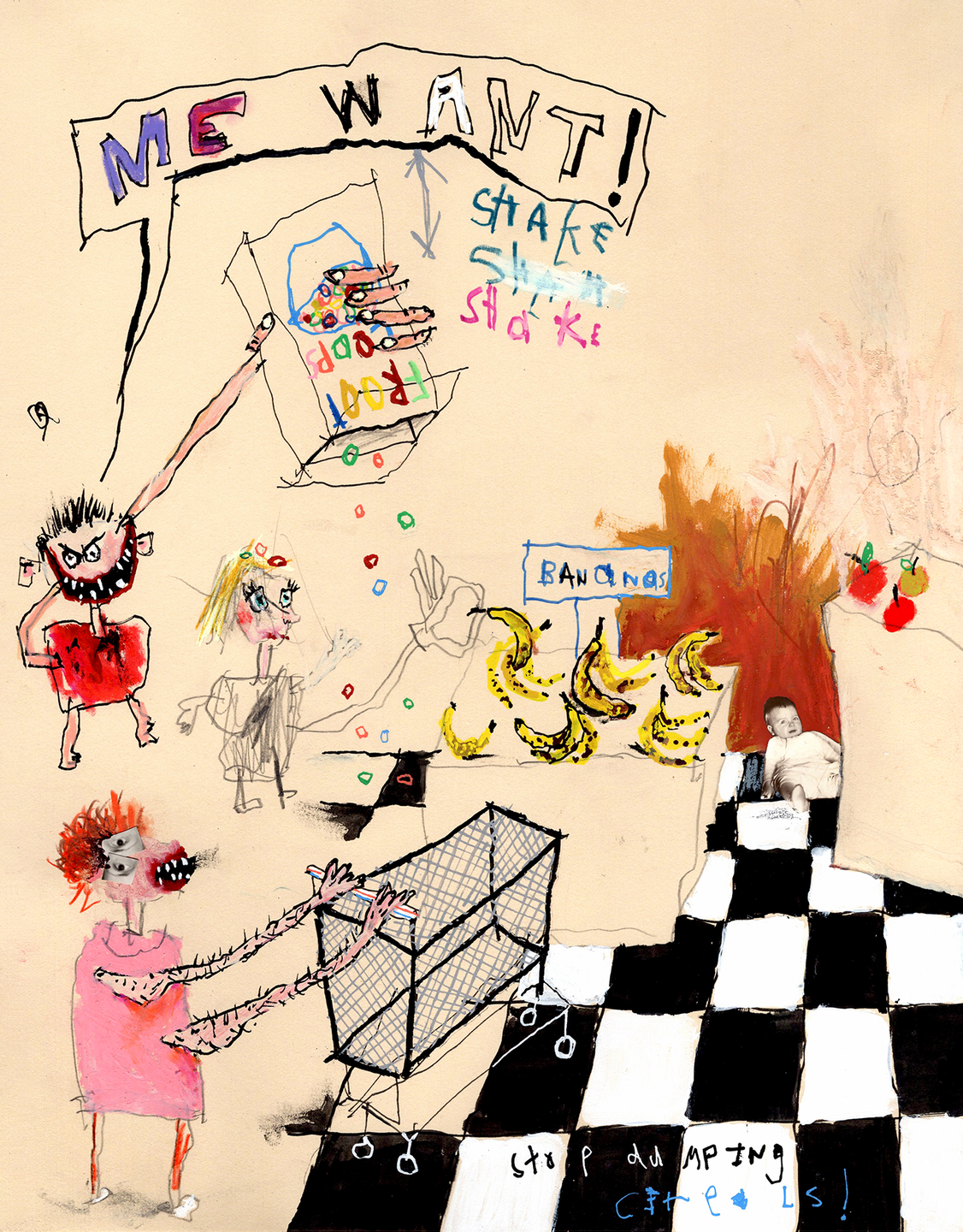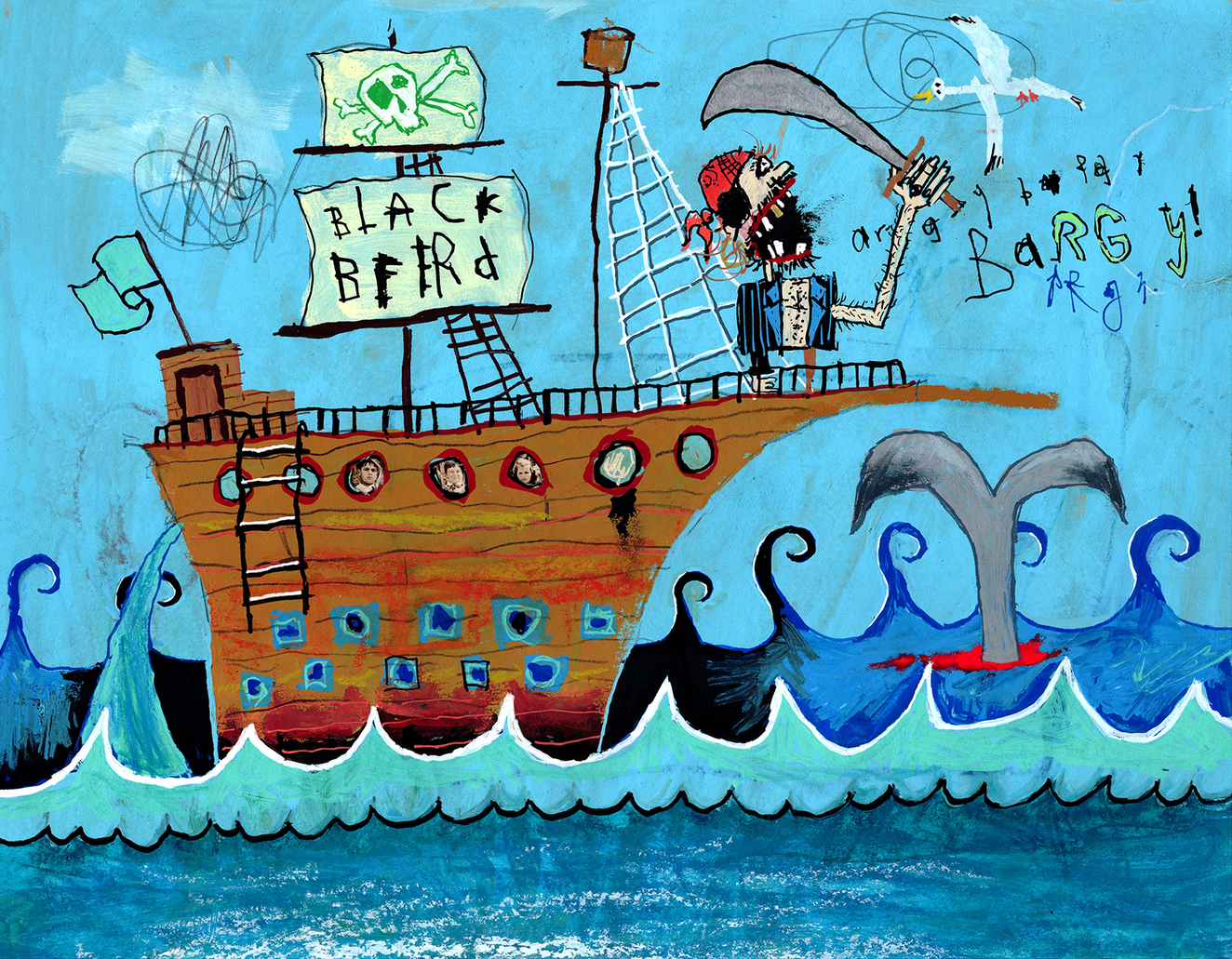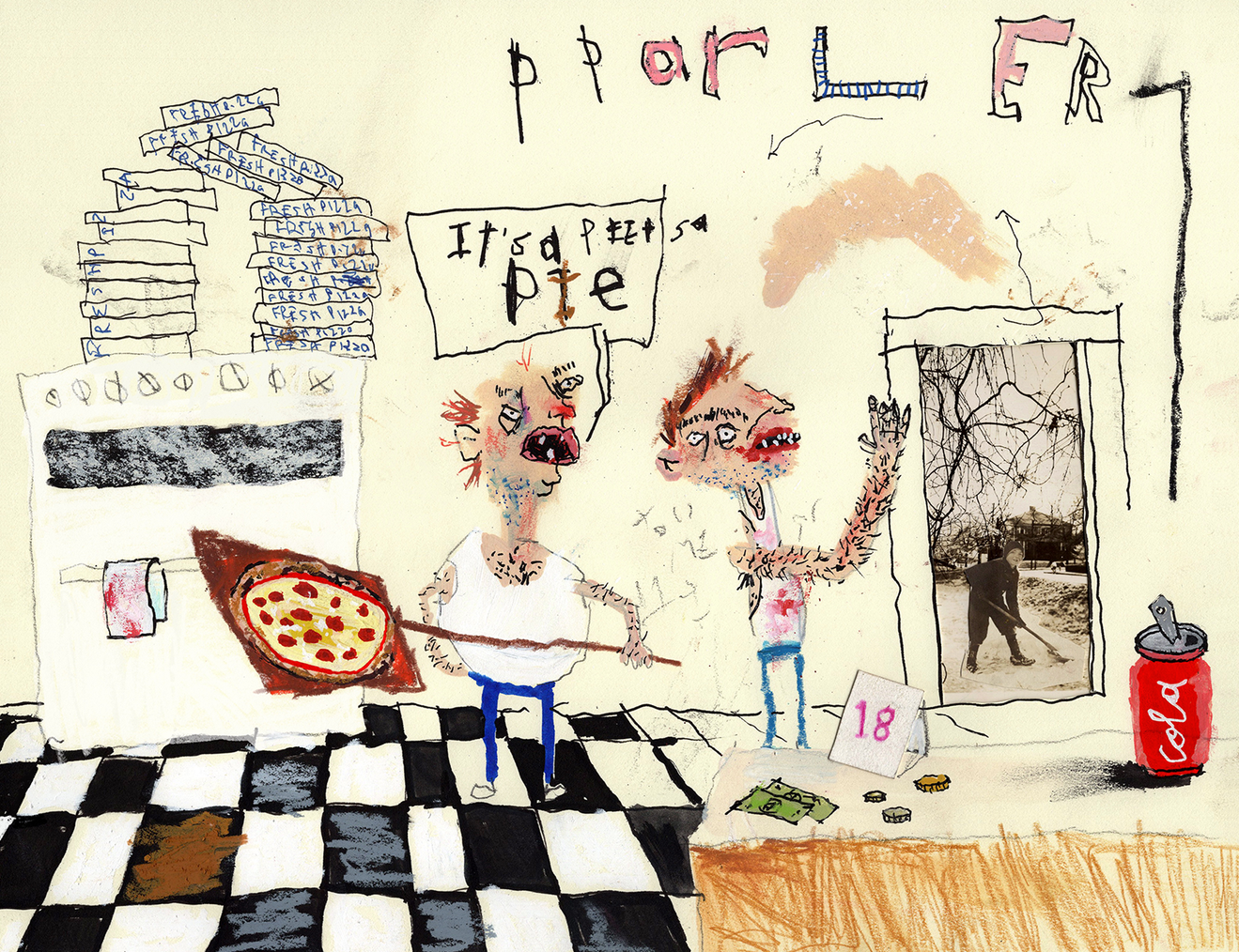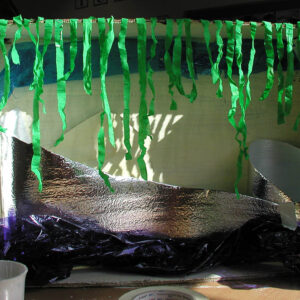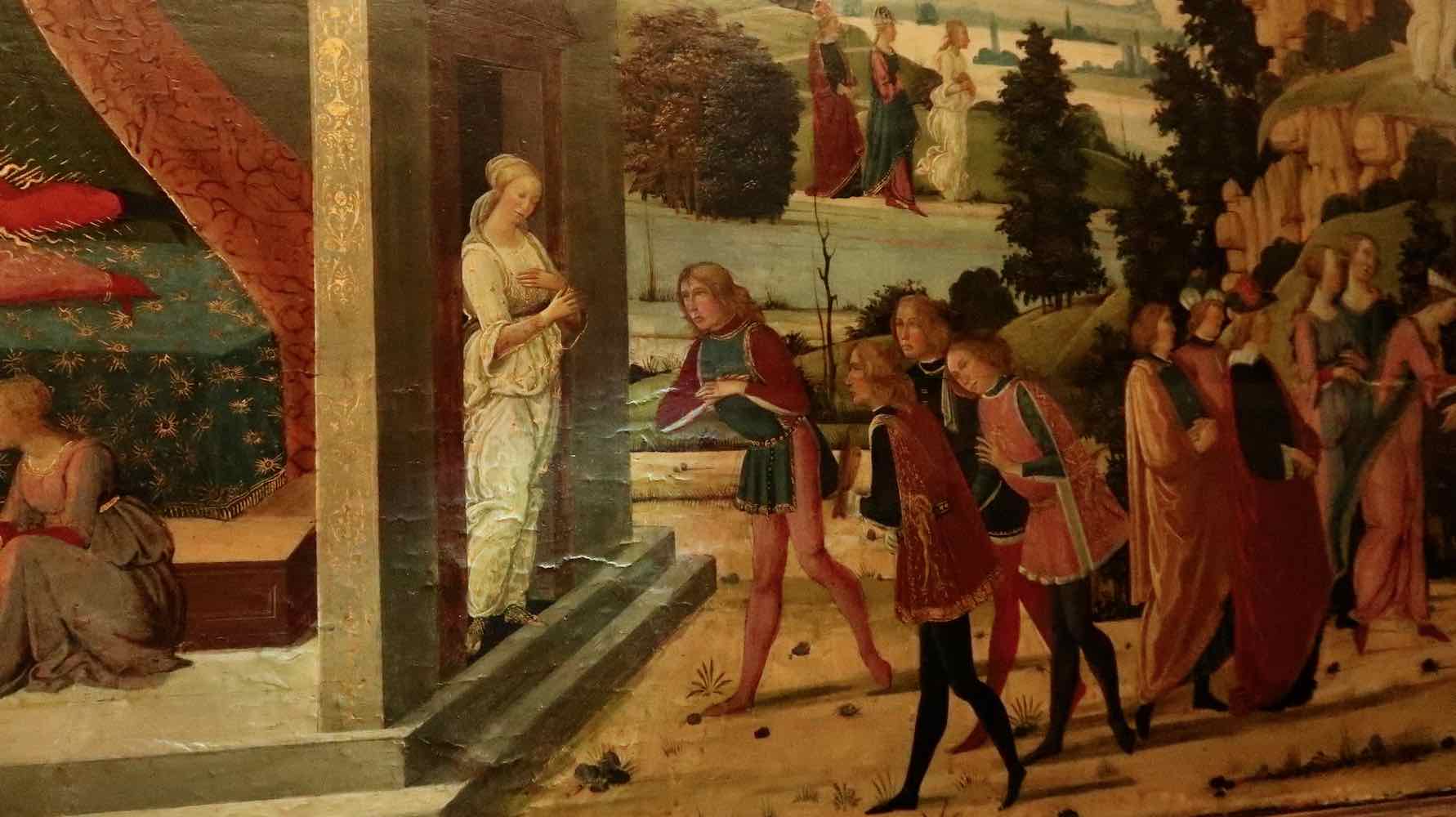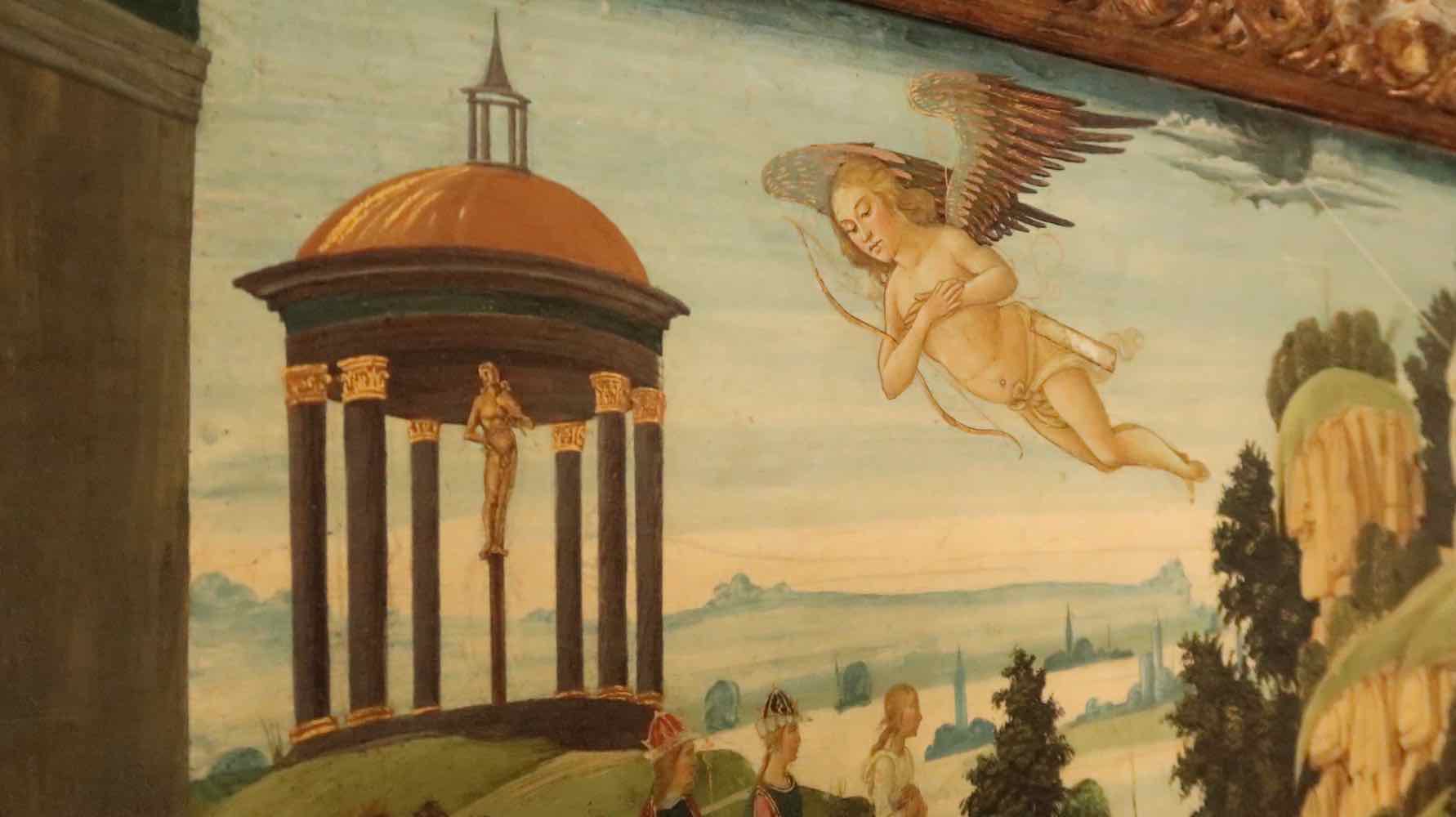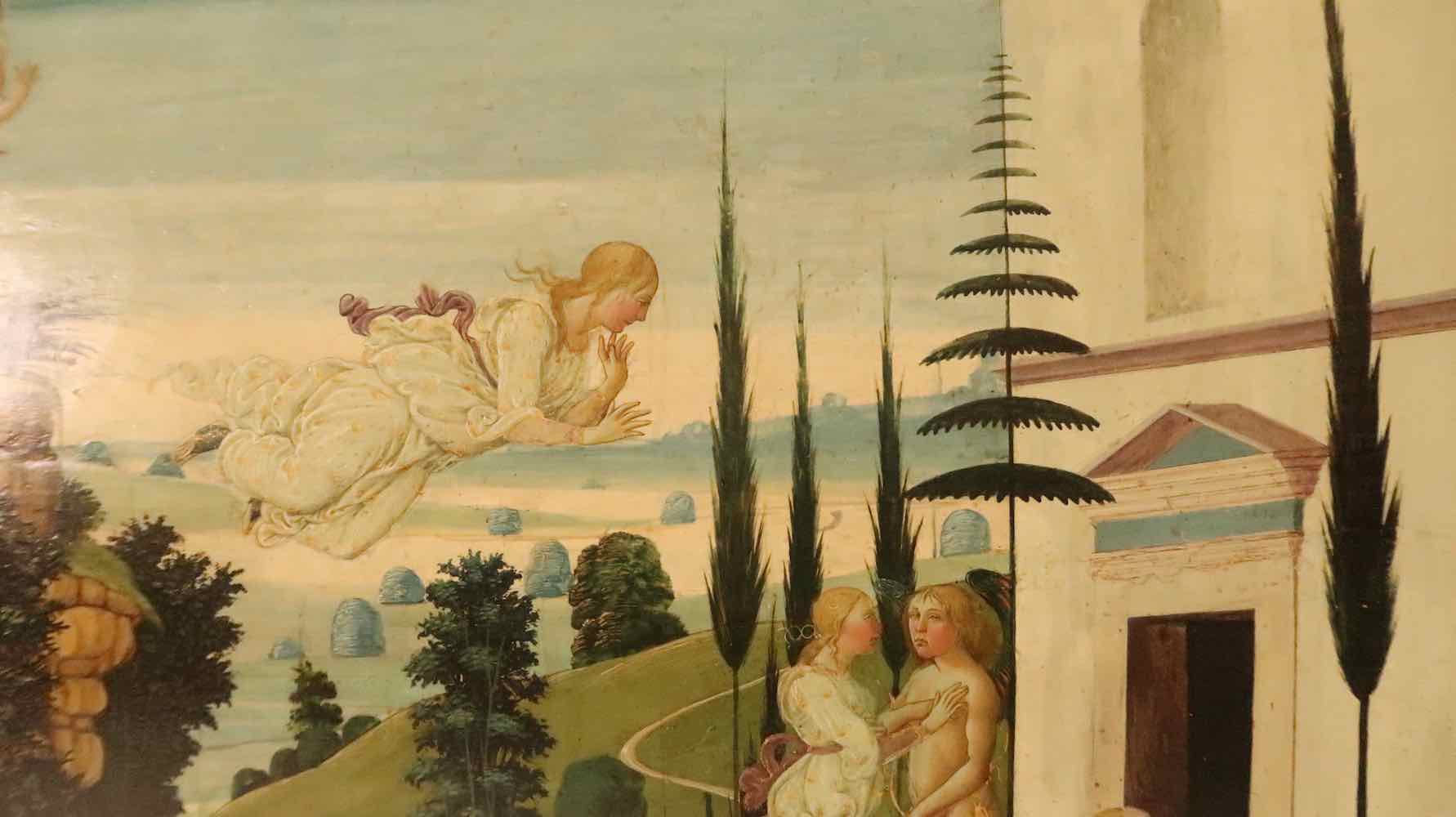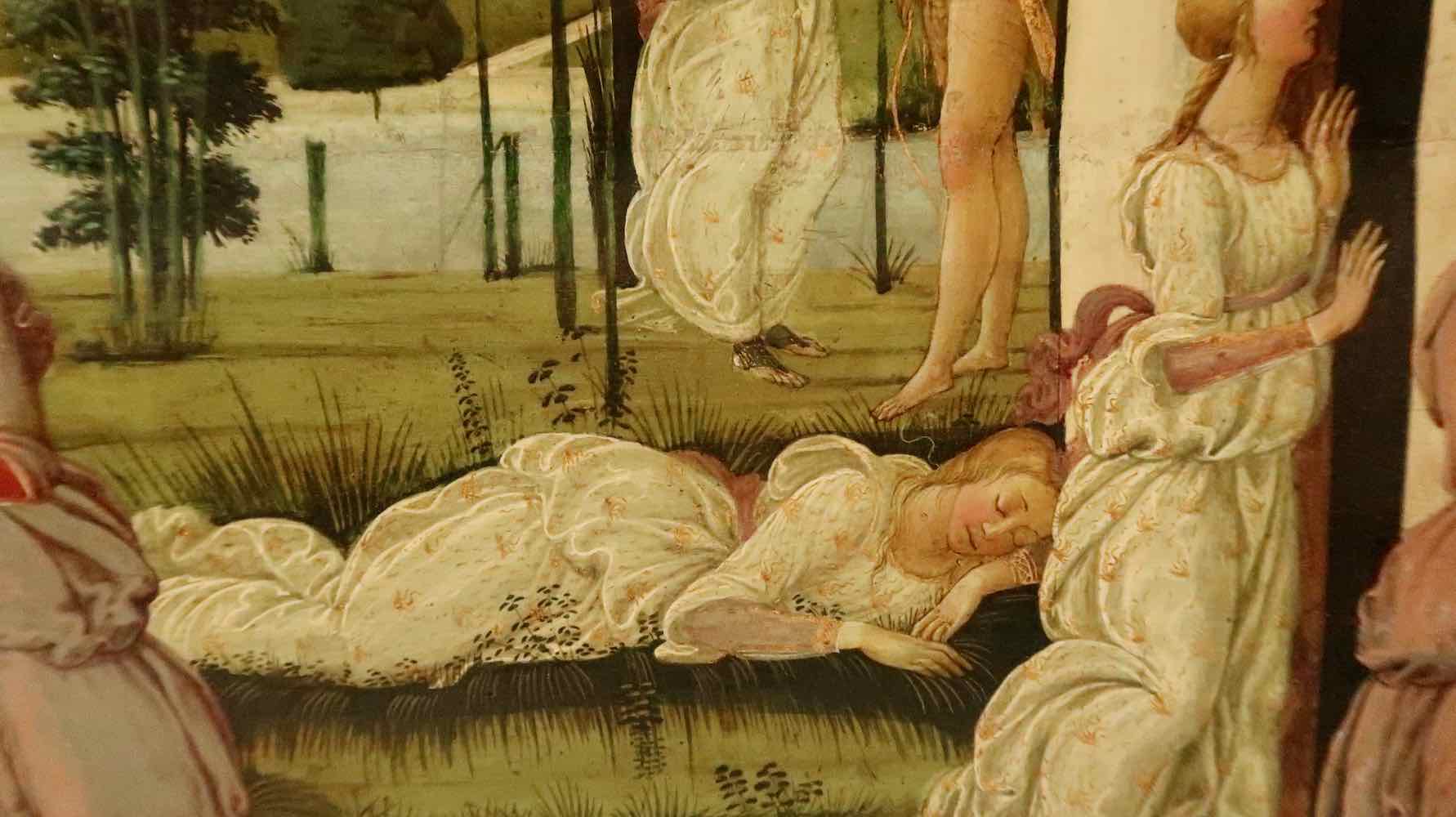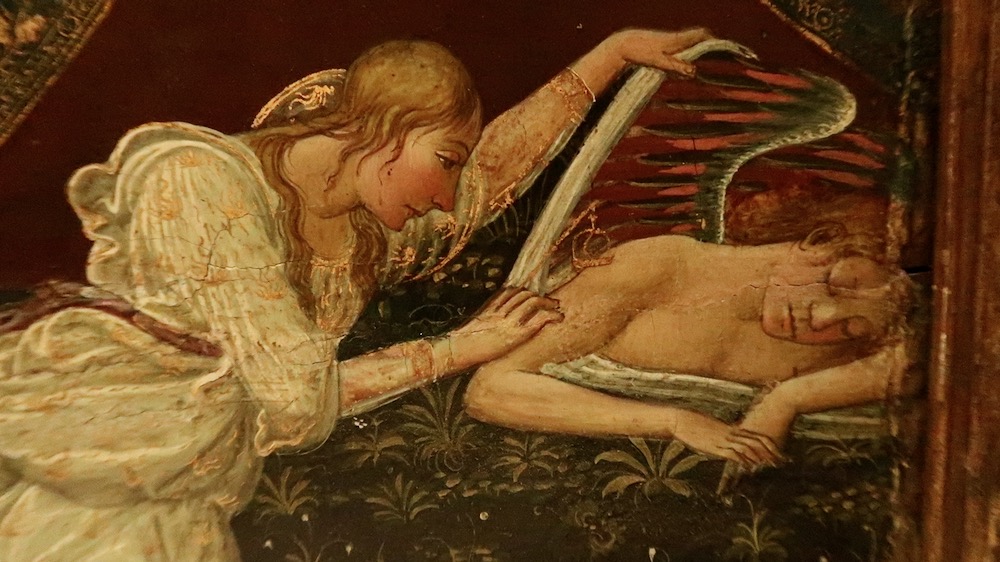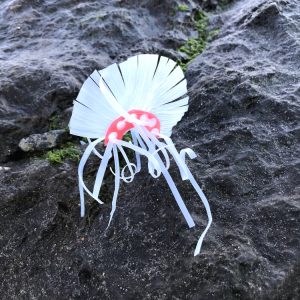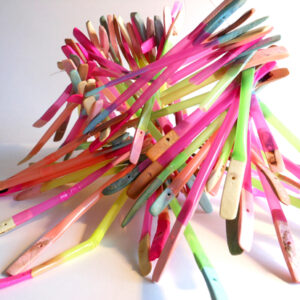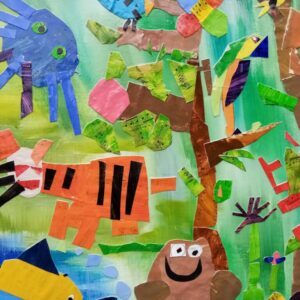Can you still draw something even though you can’t see it?
As well as the sculptural work he is best known for, Henry Moore also produced many drawings throughout his career including ones made in the dark of a coal mine. This work relied on imagination and memory alongside what little vision he had.
Use the below images and questions to explore further Henry Moore’s drawings done in the dark.
Please Note:
This page includes links and videos from external sites, verified at publication but subject to change.
Teachers should review all content for classroom suitability.
Report any issues, and check school firewall settings if videos don’t play.



Henry Moore
Henry Moore is best known for his sculptures and Shelter drawings, but in 1942 Moore also created a series of sketches from Wheldale Colliery, where his father had worked. Moore spent one week drawing from observation down the dark coal mine, and then created drawings, combining memory with observation.
Moore reflected upon his experience, stating “I now like black for its blackness – for its strength, its drama, its seriousness (and unsweetness).” – C. Owen, Drawing in The Dark: Henry Moore’s Coalmining Commission, 2022, p.136
Pit Notebook
In his Pit Notebook, Moore would create preparatory sketches. He would also make notes, jotting down what he could see or words that came to mind as he drew. On the pages of his Pit Notebook he would quickly carve out the space, creating a sense of what it was like down the coal mine in Castleford.
Some of the sketches focus on figures and others on the environment.
These preliminary drawings were pivotal in the development of final drawings. Moore would piece together the different sketches, considering the notes he had jotted down and how he had felt within the space to create a complete drawing.
Explore a selection of Moore’s Pit Notebook sketches below.
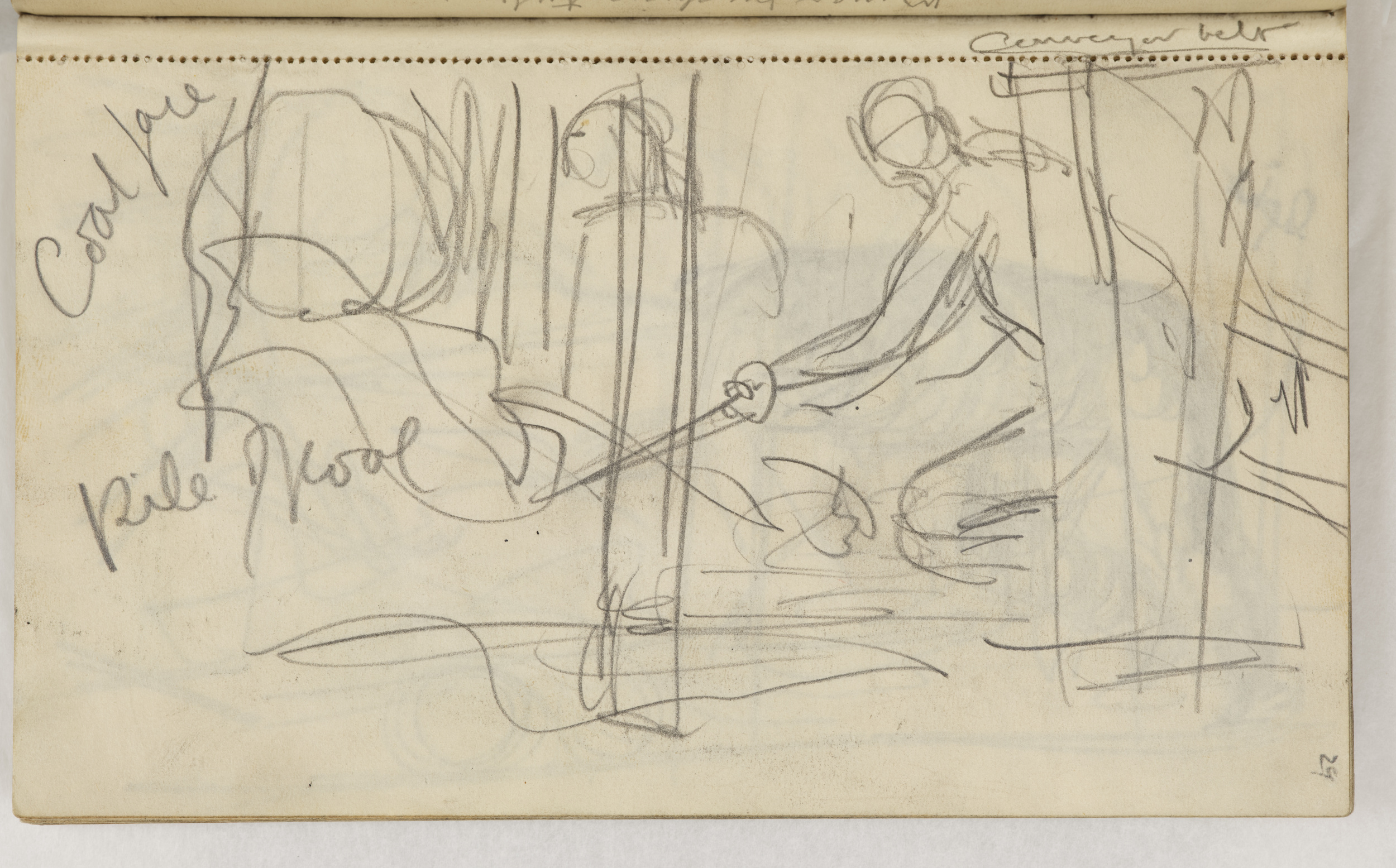 Miners at the Coalface, 1941-42 Page 29 from Coalmining Notebook A HMF 1886 pencil 127 x 200 mm The Henry Moore Foundation: gift of the artist 1977 Photo: Nigel Moore.
Miners at the Coalface, 1941-42 Page 29 from Coalmining Notebook A HMF 1886 pencil 127 x 200 mm The Henry Moore Foundation: gift of the artist 1977 Photo: Nigel Moore.
Reproduced by permission of The Henry Moore Foundation
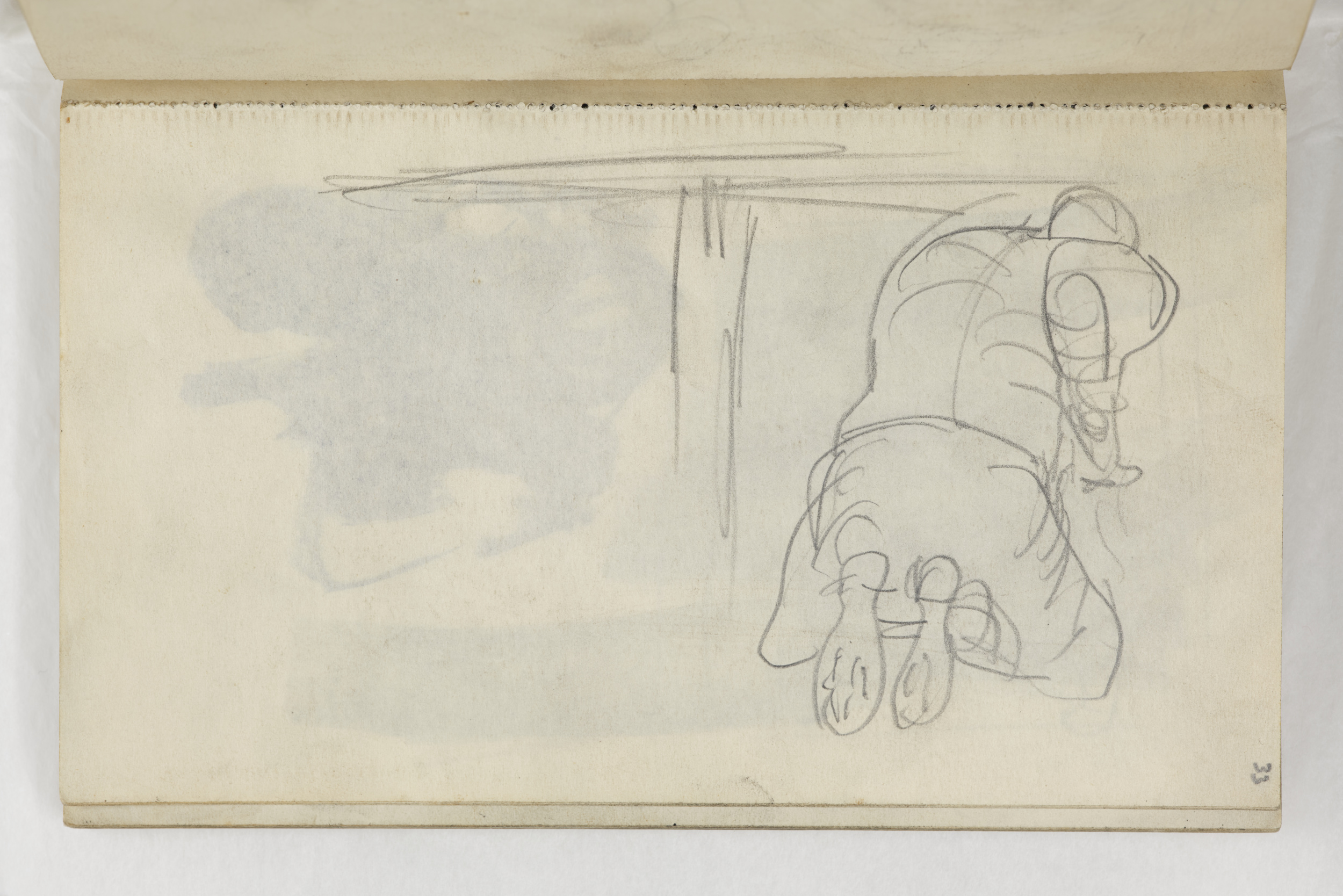 Miner Working, 1941 Page 33 from Coalmining Notebook A HMF 1890 pencil 127 x 200 mm The Henry Moore Foundation: gift of the artist 1977 Photo: Nigel Moore. Reproduced by permission of The Henry Moore Foundation
Miner Working, 1941 Page 33 from Coalmining Notebook A HMF 1890 pencil 127 x 200 mm The Henry Moore Foundation: gift of the artist 1977 Photo: Nigel Moore. Reproduced by permission of The Henry Moore Foundation
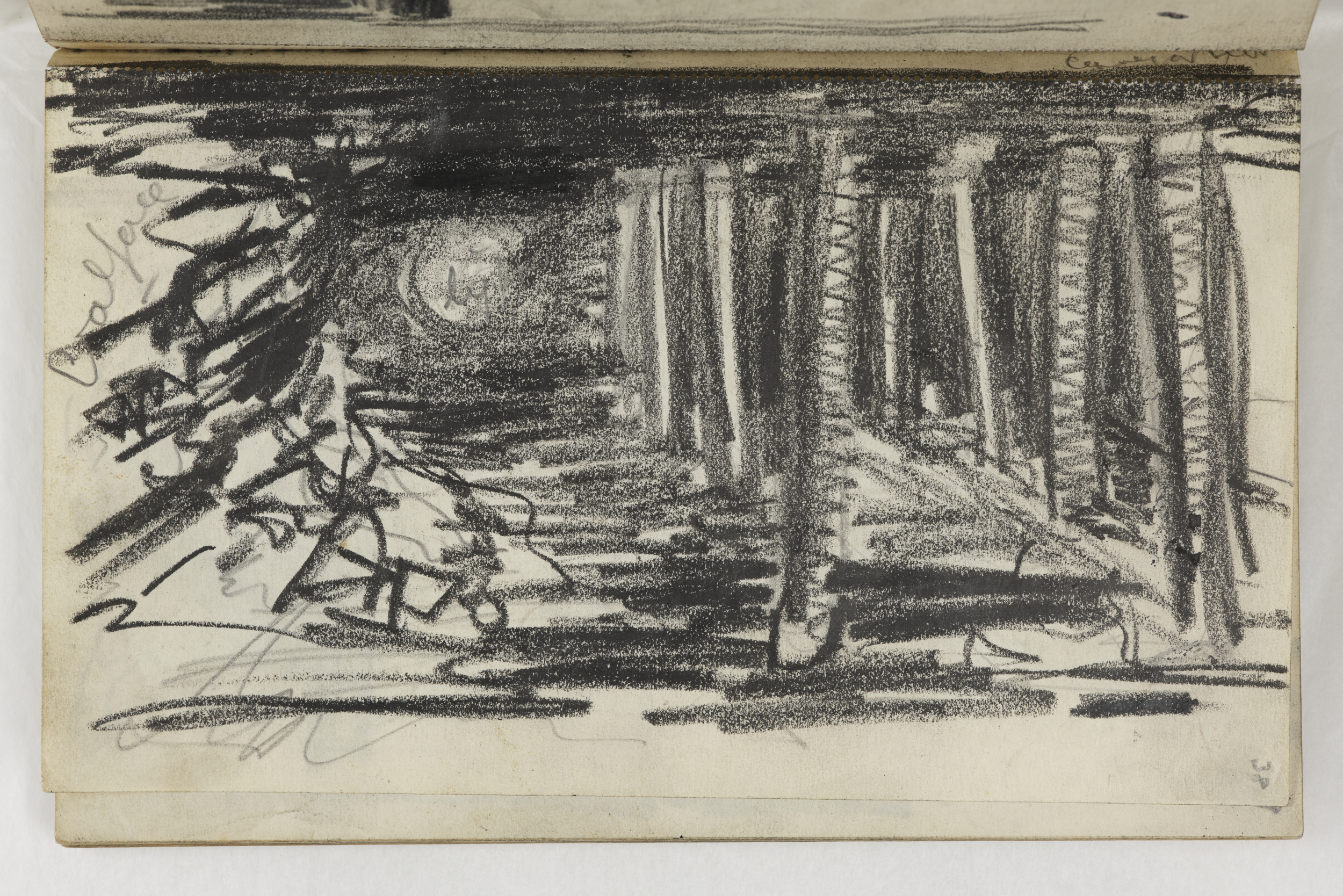 View Down Tunnel, 1941 Page 38 from Coalmining Notebook A HMF 1895 pencil, crayon 127 x 200 mm The Henry Moore Foundation: gift of the artist 1977 Photo: Nigel Moore. Reproduced by permission of The Henry Moore Foundation
View Down Tunnel, 1941 Page 38 from Coalmining Notebook A HMF 1895 pencil, crayon 127 x 200 mm The Henry Moore Foundation: gift of the artist 1977 Photo: Nigel Moore. Reproduced by permission of The Henry Moore Foundation
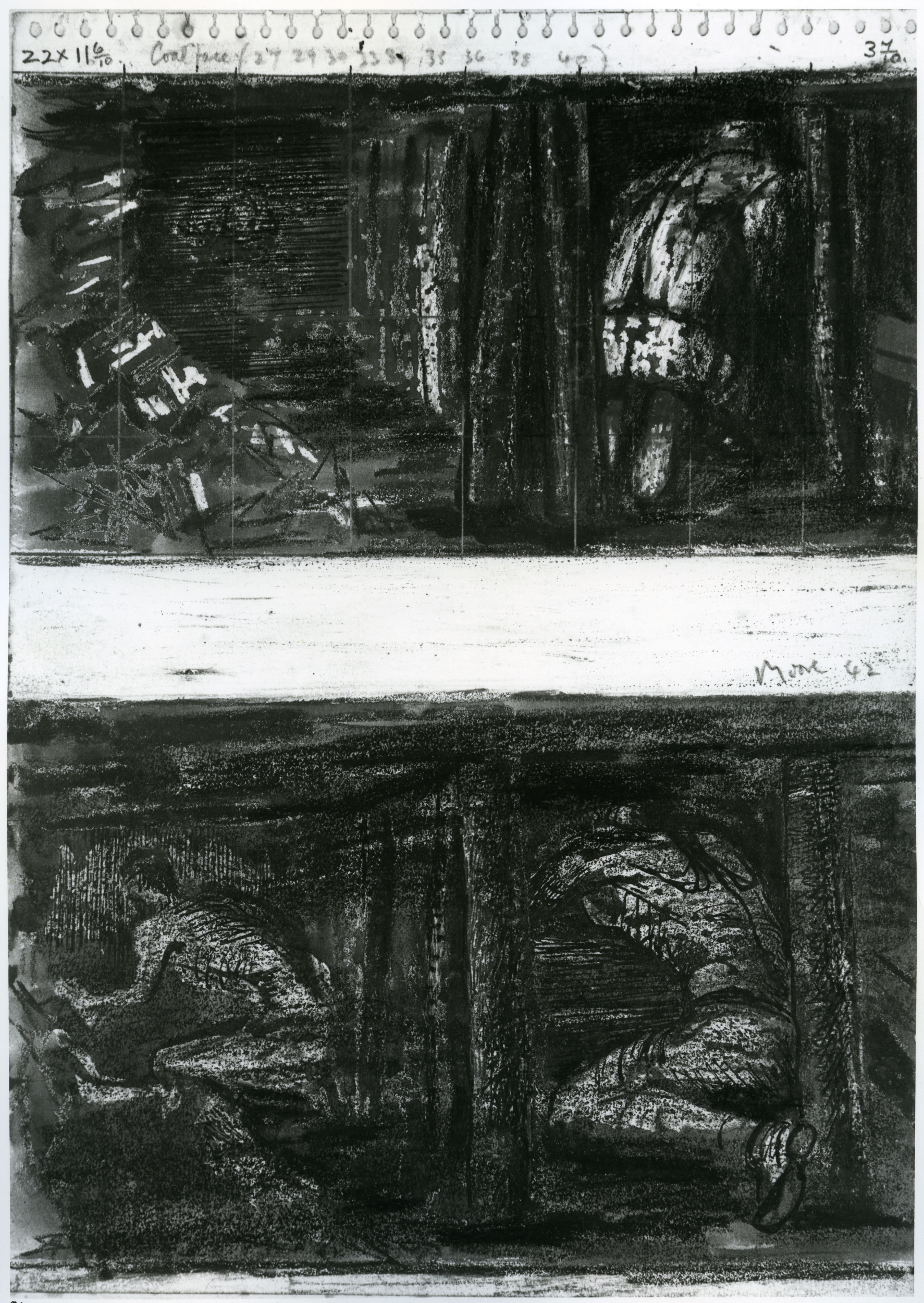 Study for ‘Miners at Work on the Coalface’ 1942 HMF 1961 Photo: Henry Moore Archive
Study for ‘Miners at Work on the Coalface’ 1942 HMF 1961 Photo: Henry Moore Archive
Quotes From Henry Moore
Here you will find some quotes by Henry Moore referencing his developmental drawings. You may use these quotes as prompts for some activities from the “An Exploration of Coal Mining Through Henry Moore” pathway, or just use them for discussion.
“There was the problem of getting form out of darkness – of making the light from the miners’ helmet-lamps produce figures out of thick blackness – of drawing in the dark.” C. Owen, Drawing in The Dark: Henry Moore’s Coalmining Commission, 2022, p.136
“The blackest chalk or ink is grey compared to the pitch blackness of complete darkness.” C. Owen, Drawing in The Dark: Henry Moore’s Coalmining Commission, 2022, p.67
“To record in drawing what I felt and saw was a very difficult struggle. There was first the difficulty of seeing forms emerging out of deep darkness, then the problem of conveying the claustrophobic effect of countless wooden pitprops, 2 or 3 feet apart, receding into blackness.” – C. Owen, Drawing in The Dark: Henry Moore’s coal mining Commission, 2022, p.67
“As each drawing develops, it is like going outside from a lighted room on a dark night – at first seeing nothing, then slowly distinguishing objects and distances – sensing space with unknown depths.”- C. Owen, Drawing in The Dark: Henry Moore’s Coalmining Commission, 2022, p.8
“The white of the paper showing through the black chalk gives off light (almost real light) like the night sky reflected in water.” – K. Clark, Henry Moore Drawings 1974, p.292
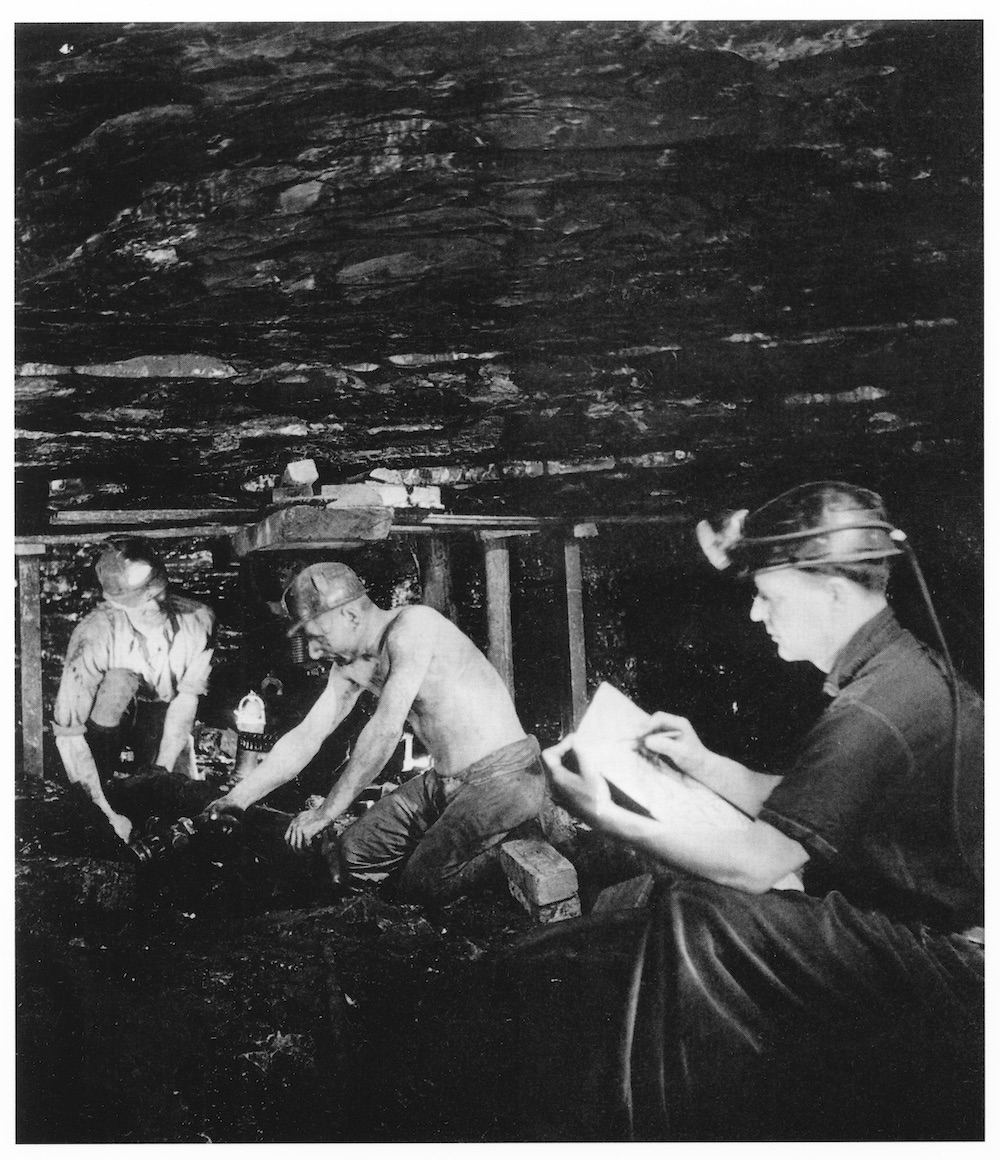 1942 Henry Moore sketching two miners at Wheldale Colliery Henry Moore Foundation archive 7 x 8” black and white print. Photo: Reuben Saidman
1942 Henry Moore sketching two miners at Wheldale Colliery Henry Moore Foundation archive 7 x 8” black and white print. Photo: Reuben Saidman
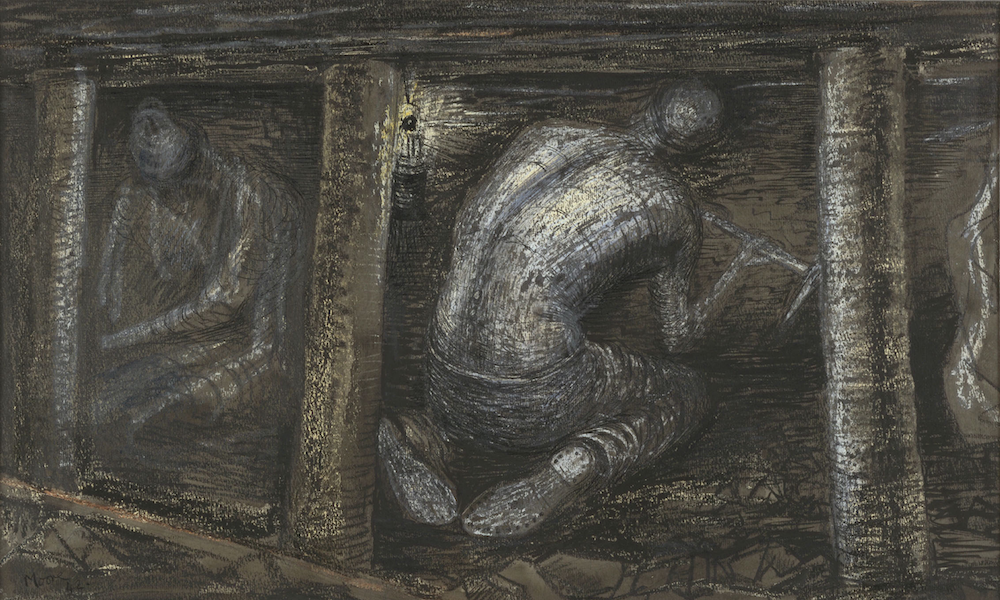 Henry Moore At the Coal Face 1942 Image (C) the Whitworth The University of Manchester (003)
Henry Moore At the Coal Face 1942 Image (C) the Whitworth The University of Manchester (003)
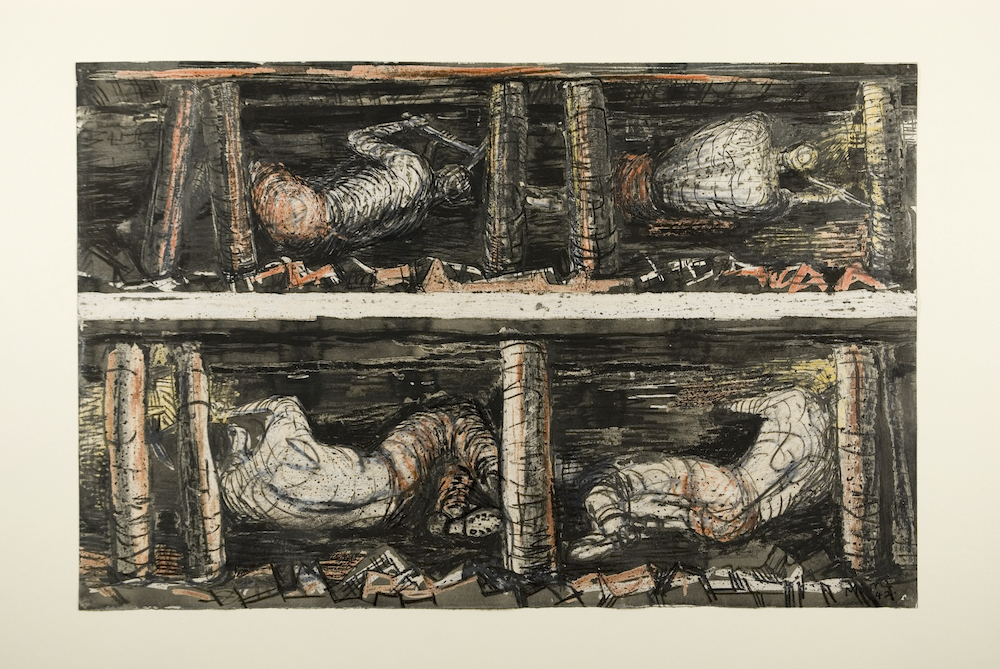 Four Studies of Miners at the Coalface, 1942, drawing. (HMF 2000a). Photo Michael Phipps. Reproduced by permission of The Henry Moore Foundation copy
Four Studies of Miners at the Coalface, 1942, drawing. (HMF 2000a). Photo Michael Phipps. Reproduced by permission of The Henry Moore Foundation copy
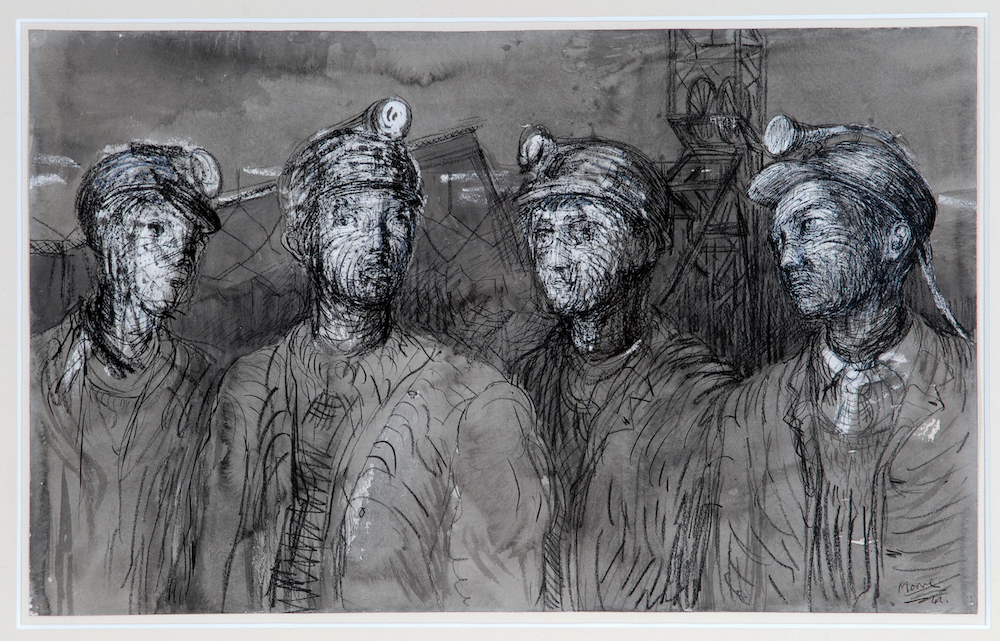 Pit Boys at Pit Head 1942 Wakefield Permanent Art Collection Image Courtesy of The Hepworth Wakefield LR copy. © The Henry Moore Foundation. All Rights Reserved, DACS 2022 / www.henry-moore.org. Photo credit: Wakefield Permanent Art Collection
Pit Boys at Pit Head 1942 Wakefield Permanent Art Collection Image Courtesy of The Hepworth Wakefield LR copy. © The Henry Moore Foundation. All Rights Reserved, DACS 2022 / www.henry-moore.org. Photo credit: Wakefield Permanent Art Collection
Questions to Ask Students
What kind of marks can you see?
How would you describe the atmosphere?
What do you think Moore was trying to capture in the image?
How do you think Moore might have felt drawing in the coal mine?
How do the preparatory sketches feed into his final sketches? Can you see any similarities or differences?
What impact do you think sketching in a contained, hot, dark space such as an underground mine would have had on Moore’s drawings?
Henry Moore is known for his sculptures of the reclining female form. How would drawing miners at work have differed from his usual subject?
What atmosphere is Moore trying to evoke in these drawings? How do his marks contribute to the overall feel of the images?
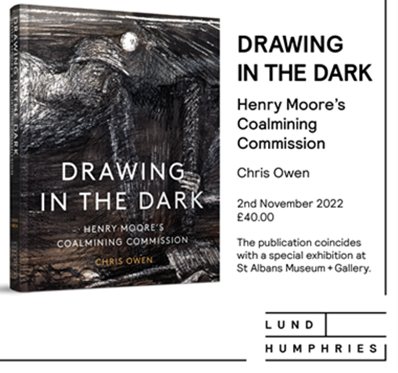
Many thanks to AccessArt trustee, Chris Owen, for the inspiration behind this Talking Points.
‘Chris Owen’s comprehensive account of the coalmining drawings explores every aspect of the commission – from Moore’s return to his childhood home and the challenges associated with ‘drawing in the dark’ to the significant influence of the project on Moore’s later work, including the Warrior and Helmet Head sculptures, and his little-known illustrations to W.H. Auden’s poetry’ – Find Chris’s book here.
This Talking Points Is Used In…
Pathway: An Exploration of coal mining Inspired by henry moore
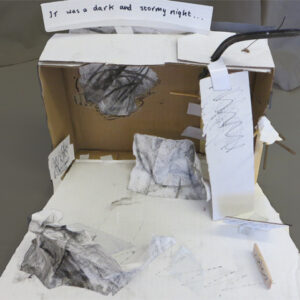
Pathway: How Can I Use Light & Dark To Create A Sense Of Space, Inspired By The Coal Mining Drawings Of Henry Moore?
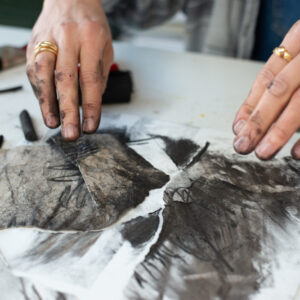
Show me what you see
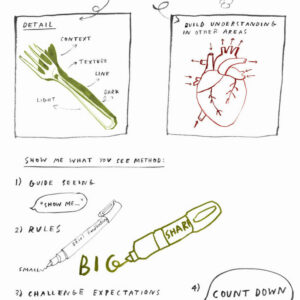
using sketchbooks to make visual notes
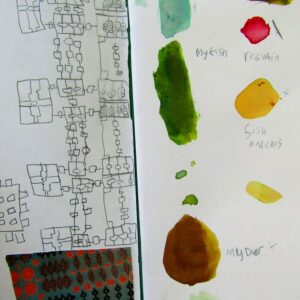



![]()
![]()
![]()
![]()
![]()
![]()



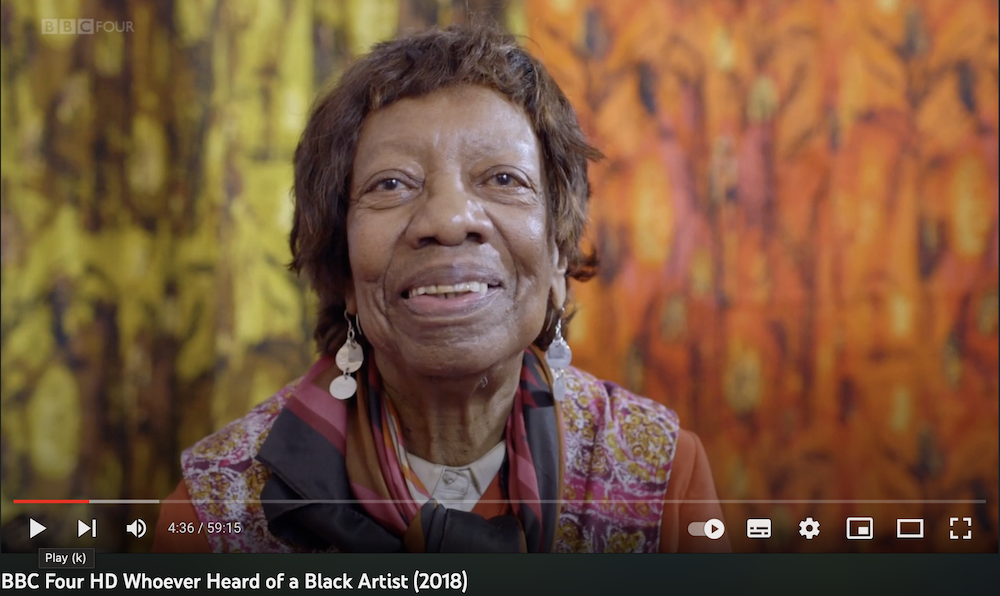

 Miners at the Coalface, 1941-42 Page 29 from Coalmining Notebook A HMF 1886 pencil 127 x 200 mm The Henry Moore Foundation: gift of the artist 1977 Photo: Nigel Moore.
Miners at the Coalface, 1941-42 Page 29 from Coalmining Notebook A HMF 1886 pencil 127 x 200 mm The Henry Moore Foundation: gift of the artist 1977 Photo: Nigel Moore. Miner Working, 1941 Page 33 from Coalmining Notebook A HMF 1890 pencil 127 x 200 mm The Henry Moore Foundation: gift of the artist 1977 Photo: Nigel Moore. Reproduced by permission of The Henry Moore Foundation
Miner Working, 1941 Page 33 from Coalmining Notebook A HMF 1890 pencil 127 x 200 mm The Henry Moore Foundation: gift of the artist 1977 Photo: Nigel Moore. Reproduced by permission of The Henry Moore Foundation View Down Tunnel, 1941 Page 38 from Coalmining Notebook A HMF 1895 pencil, crayon 127 x 200 mm The Henry Moore Foundation: gift of the artist 1977 Photo: Nigel Moore. Reproduced by permission of The Henry Moore Foundation
View Down Tunnel, 1941 Page 38 from Coalmining Notebook A HMF 1895 pencil, crayon 127 x 200 mm The Henry Moore Foundation: gift of the artist 1977 Photo: Nigel Moore. Reproduced by permission of The Henry Moore Foundation Study for ‘Miners at Work on the Coalface’ 1942 HMF 1961 Photo: Henry Moore Archive
Study for ‘Miners at Work on the Coalface’ 1942 HMF 1961 Photo: Henry Moore Archive 1942 Henry Moore sketching two miners at Wheldale Colliery Henry Moore Foundation archive 7 x 8” black and white print. Photo: Reuben Saidman
1942 Henry Moore sketching two miners at Wheldale Colliery Henry Moore Foundation archive 7 x 8” black and white print. Photo: Reuben Saidman Henry Moore At the Coal Face 1942 Image (C) the Whitworth The University of Manchester (003)
Henry Moore At the Coal Face 1942 Image (C) the Whitworth The University of Manchester (003) Four Studies of Miners at the Coalface, 1942, drawing. (HMF 2000a). Photo Michael Phipps. Reproduced by permission of The Henry Moore Foundation copy
Four Studies of Miners at the Coalface, 1942, drawing. (HMF 2000a). Photo Michael Phipps. Reproduced by permission of The Henry Moore Foundation copy Pit Boys at Pit Head 1942 Wakefield Permanent Art Collection Image Courtesy of The Hepworth Wakefield LR copy. © The Henry Moore Foundation. All Rights Reserved, DACS 2022 / www.henry-moore.org. Photo credit: Wakefield Permanent Art Collection
Pit Boys at Pit Head 1942 Wakefield Permanent Art Collection Image Courtesy of The Hepworth Wakefield LR copy. © The Henry Moore Foundation. All Rights Reserved, DACS 2022 / www.henry-moore.org. Photo credit: Wakefield Permanent Art Collection


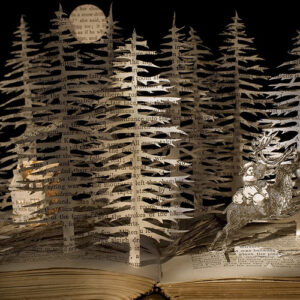
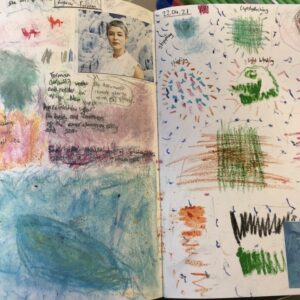
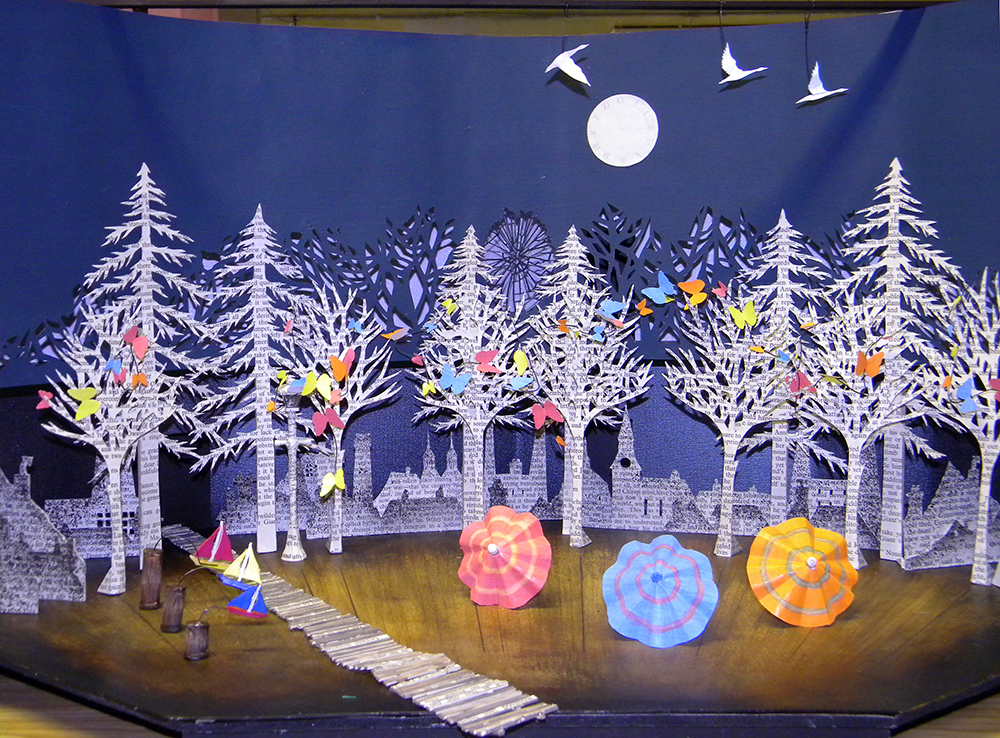
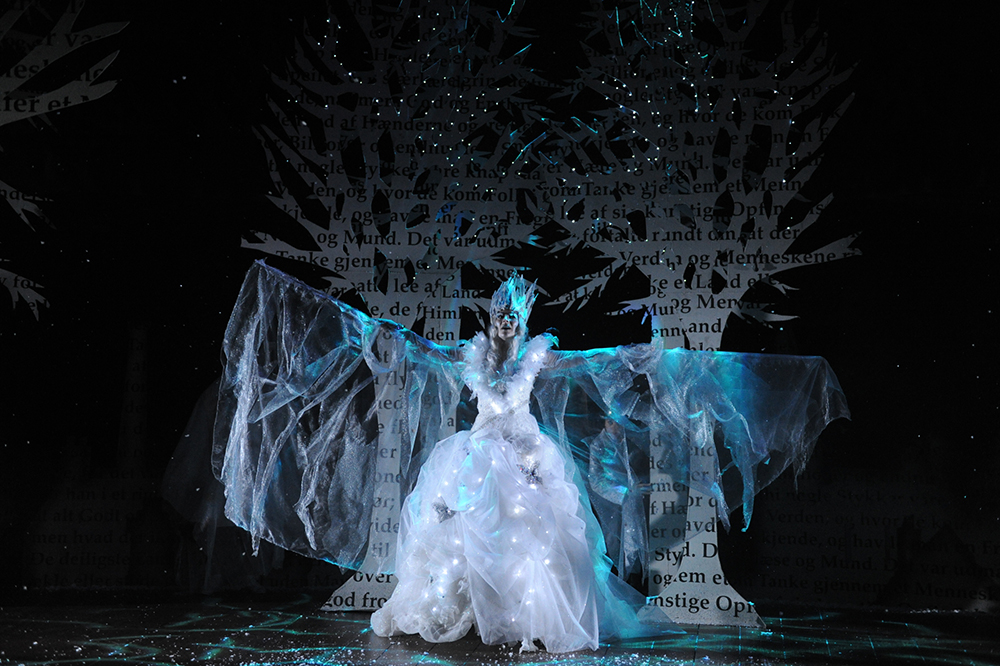
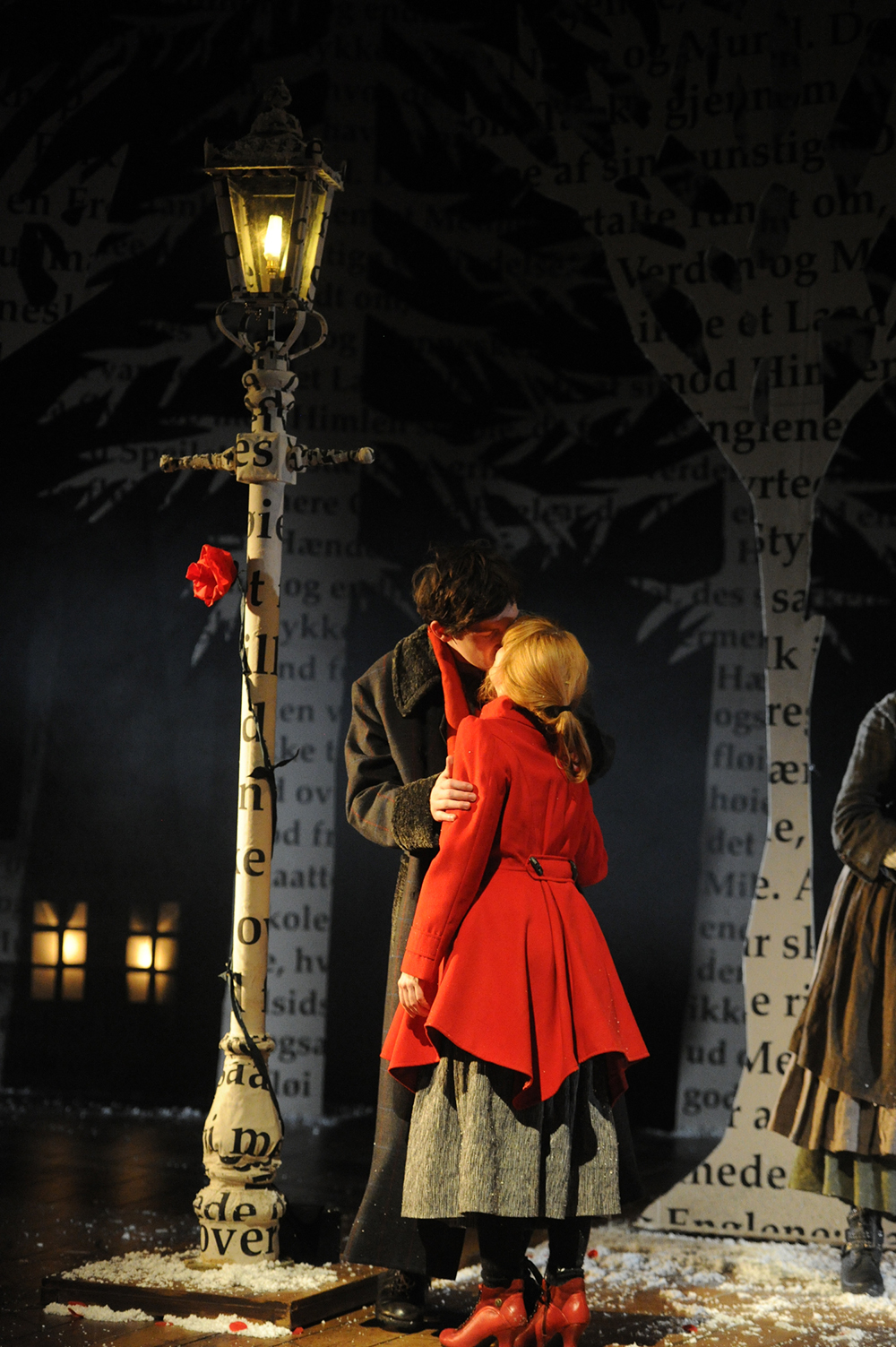
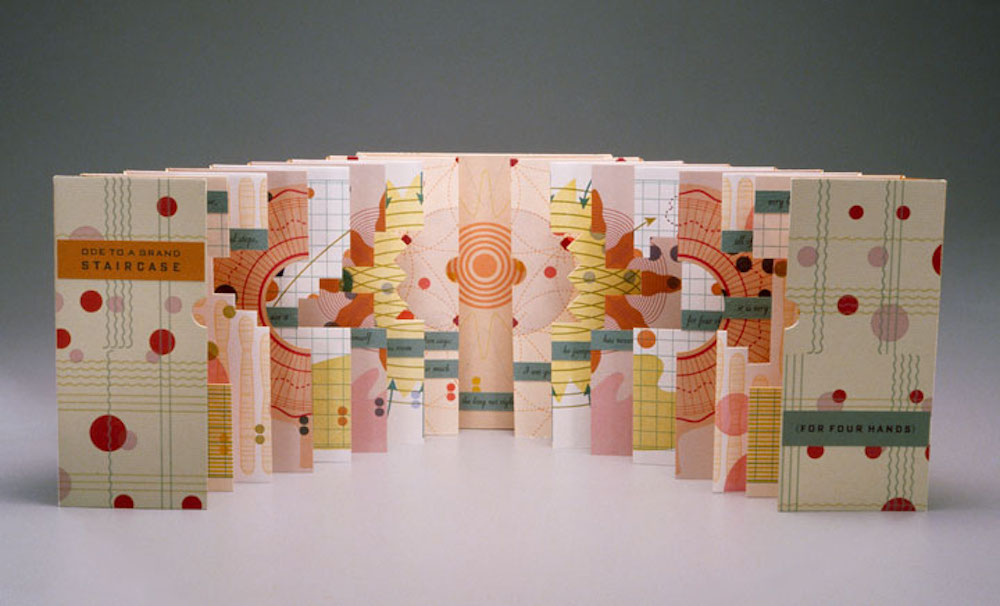 Ode To A Grand Staircase By Julie Chen
Ode To A Grand Staircase By Julie Chen